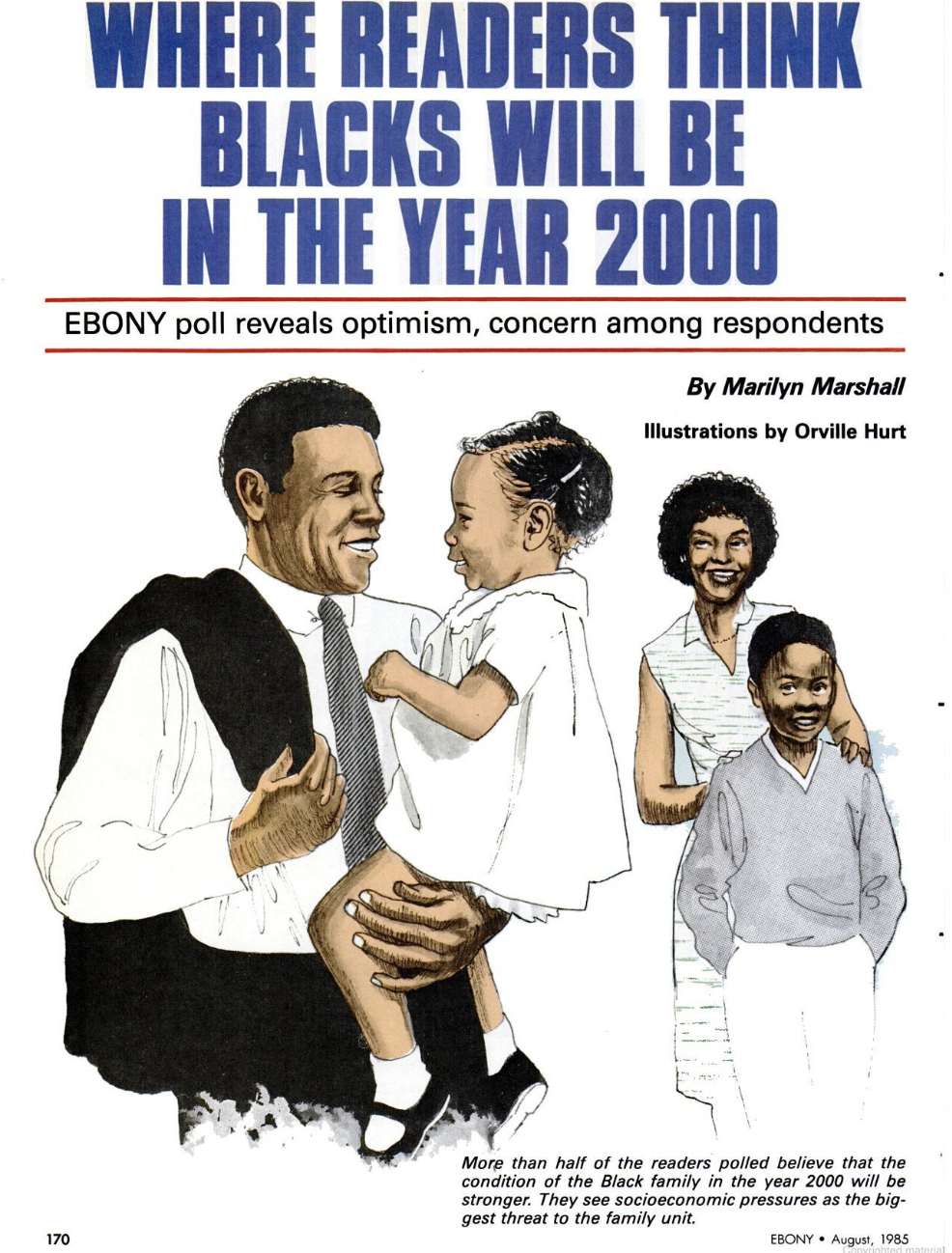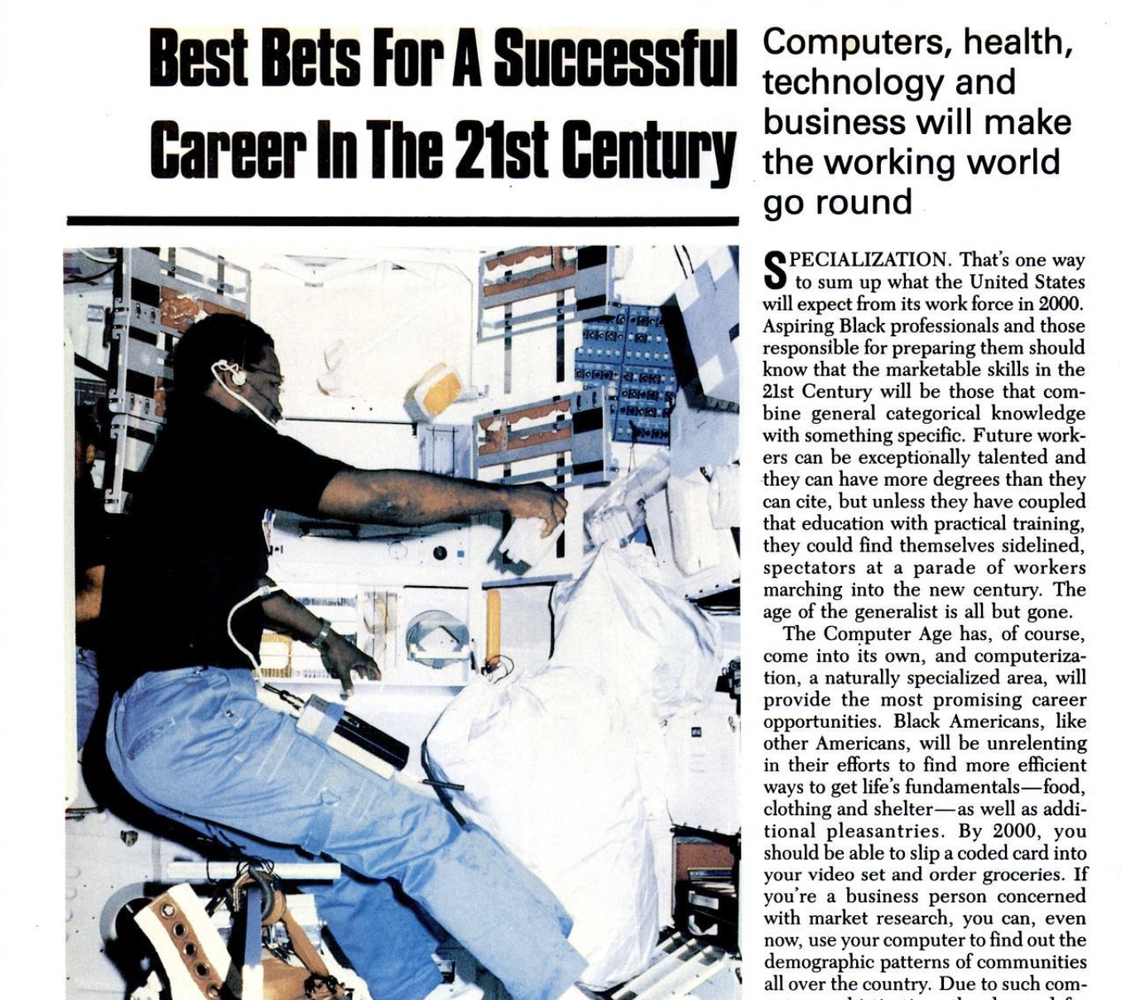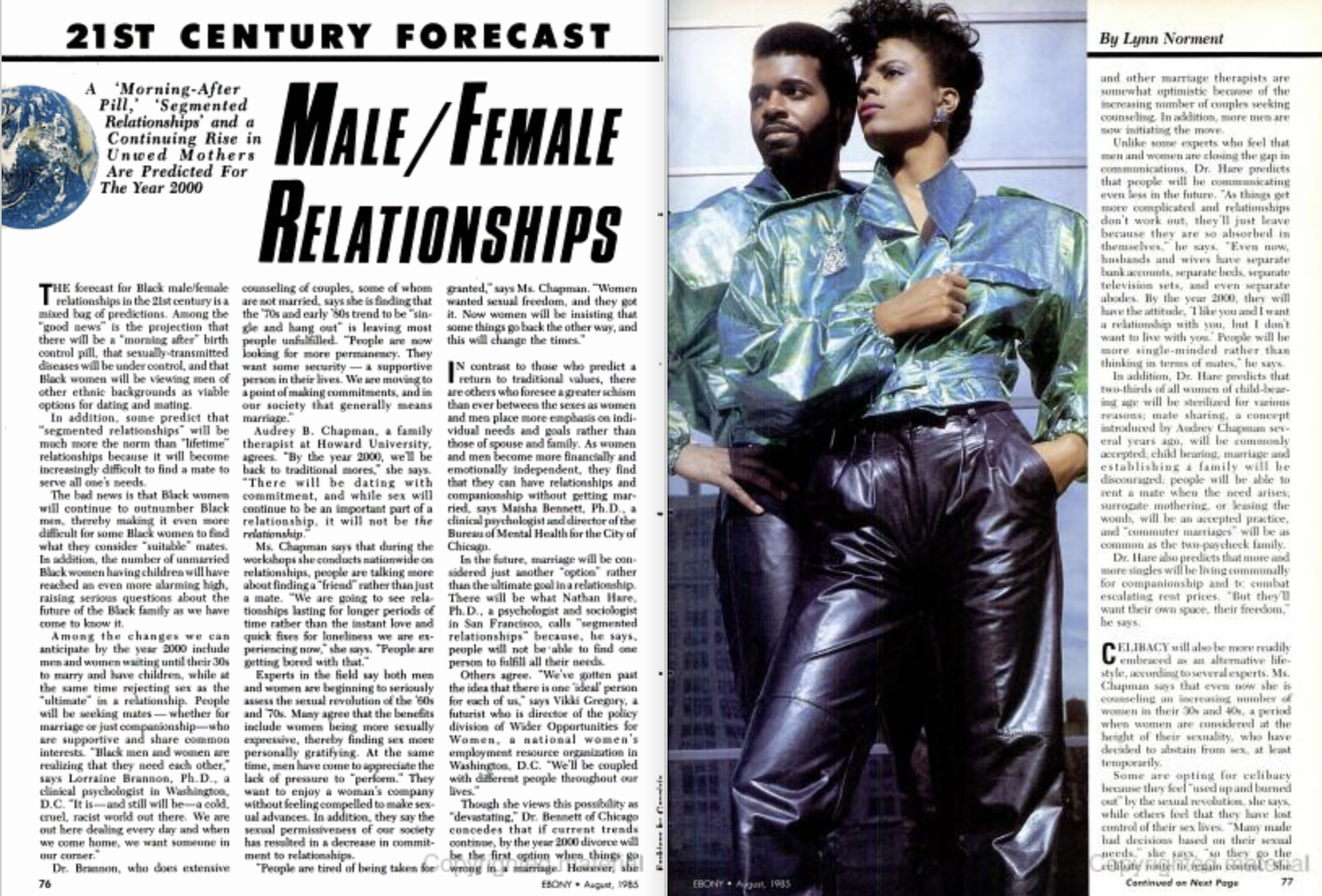We've Been Time Travelers: Black Survival as Future Work
In August 1985, Ebony magazine published a special issue called "Blacks and the Future: Where Will We Be in the Year 2000?" It invited Black Americans to look fifteen years ahead. What landed on newsstands was part forecast, part fantasy, part survival manual.
I was five years old when it came out. Too young to understand what it meant, already shaped by the futures it dared to imagine. Reading it now in the wreckage of 2025, I see something urgent flickering through those pages. The issue wasn't trying to predict the future. It was doing something more necessary: rehearsing survival.
What the Issue Got Right (and Wrong)
Ebony imagined Black mayors in major cities. Check. A rising Black professional class. Check. Technological advancement reshaping daily life. Check.
The magazine also assumed progress would be linear. That political gains would compound. That the arc would keep bending. Here in 2025, we know better. Progress doesn't accumulate. It gets clawed back, redistributed, undone.
What the issue got profoundly right was this: futures work for Black people has always been survival work. Every vision of tomorrow emerges from the question of whether we'll be here to see it.
The Practice of Rehearsing Futures
When I work with communities doing futures thinking, I watch people light up at the permission to imagine. Then I watch them crash into the weight of why imagining matters. For Black communities, speculation isn't abstract. It's preparation.
The 1985 Ebony issue understood this instinctively. Its essays weren't just describing possible futures. They were building emotional and intellectual infrastructure for whatever might come. They were asking: how do we stay ready? How do we build capacity for conditions we can't predict?
This is what futures work actually requires. You're preparing people to move through uncertainty. You're giving them practice at holding multiple possibilities. You're building the muscle that says: the world might shift dramatically, and we'll still be here, still making decisions, still creating.
Survival as Speculative Practice
Black survival in America has always demanded speculative thinking. When the present offers violence, when the past was theft, when the future is uncertain, you develop the capacity to imagine otherwise. You get good at sensing what's coming. You learn to read signals others miss.
This is why Octavia Butler matters. Why Afrofuturism resonates. Why Ebony could publish a futures issue in 1985 that still reads as urgent forty years later. These aren't flights of fancy. They're technologies of endurance.
Consider what it takes to survive conditions designed to destroy you: You have to imagine yourself continuing when everything says you won't. You have to conceive of futures where you exist, thrive, determine your own terms. You have to pass that capacity to the next generation.
That's speculative work. That's futures thinking. That's what Black communities have been doing all along.
What We're Building Now
The question facing us in 2025 mirrors what Ebony asked in 1985: where will we be in fifteen years? In 2040? What are we rehearsing now that will let us move through what's coming?
I think about the communities doing mutual aid, building cooperative economies, practicing abolitionist futures in real time. I think about the organizers who understand that the work isn't winning any single battle. The work is building capacity to keep fighting, keep imagining, keep creating regardless of what comes.
This is the inheritance of that 1985 issue. The understanding that futures work is survival work. That speculation is preparation. That imagining tomorrow is how we stay alive today.
The Time Travel We've Always Done
Black people have been time travelers. We carry the past in our bodies, live in a present that denies us, reach toward futures we have to build with our bare hands. We move between temporal registers constantly—memory, survival, vision—because linear time has never served us.
Ebony knew this in 1985. The issue was an invitation to keep practicing that movement. To keep rehearsing futures. To keep doing the speculative work that survival requires.
Reading it now, I understand what shaped me. I was five when it came out, too young to read the words, already learning the practice. The futures we need are the ones we rehearse. The survival we achieve is the survival we imagine first.
That's the work. That's what we inherit. That's what we pass on.





